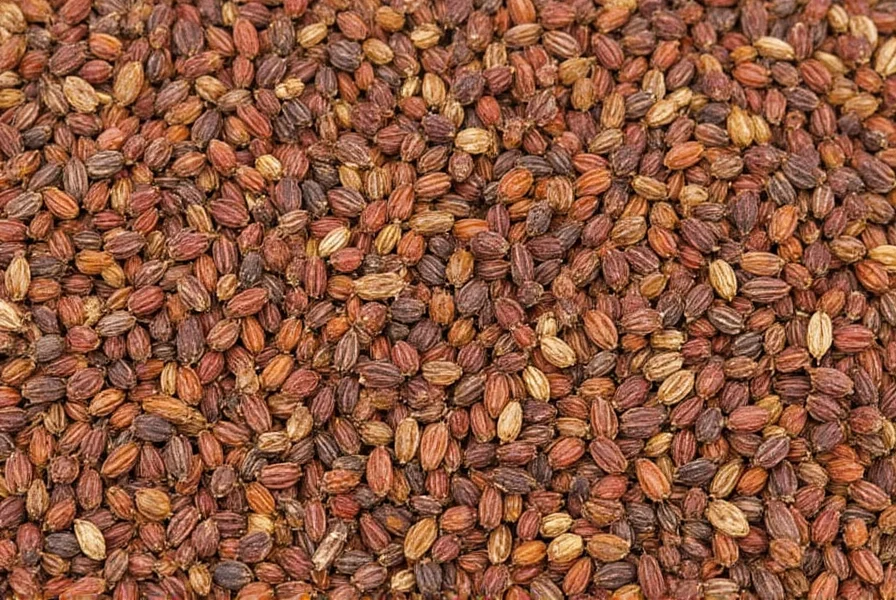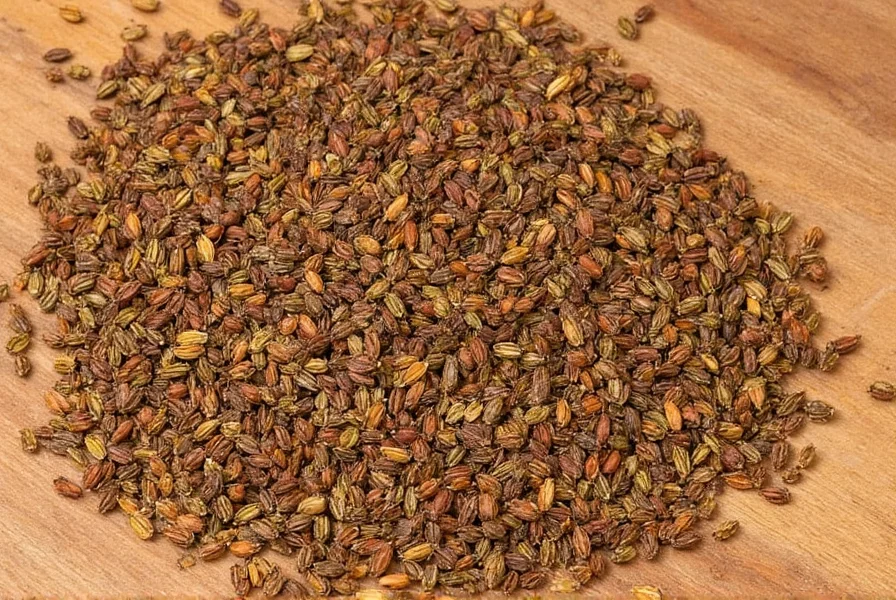Anise isn't just another spice sitting forgotten in your pantry—it's a flavor powerhouse with a rich history spanning thousands of years. While many confuse it with star anise, true anise comes from a delicate annual herb that produces tiny, crescent-shaped seeds packed with aromatic compounds. Let's explore everything you need to know about this versatile botanical wonder.
Understanding Anise: Botanical Background
Anise (Pimpinella anisum) belongs to the Apiaceae family, which includes carrots, celery, and parsley. This herb grows up to 2 feet tall with feathery leaves and small white flowers that develop into the familiar seed pods. The plant requires warm temperatures and well-drained soil to thrive, which explains its historical cultivation in regions like Egypt, Greece, and Turkey.
What makes anise particularly interesting is its chemical composition. The primary compound responsible for its distinctive flavor is anethole, which constitutes about 90% of the essential oil in anise seeds. This same compound appears in fennel and star anise, creating similar flavor profiles despite these plants being only distantly related—a phenomenon known as convergent evolution.
Physical Characteristics of Anise Seeds
Anise seeds are often mistaken for other spices due to their similar appearance. Here's how to identify genuine anise:
| Feature | Anise Seeds | Star Anise | Fennel Seeds |
|---|---|---|---|
| Shape | Oval, slightly curved (3-4mm) | Star-shaped (2-3cm) | Straight, parallel-sided (4-8mm) |
| Color | Grayish-green to brown | Reddish-brown | Green to yellow-brown |
| Flavor Profile | Sweet, delicate licorice | Stronger, more pungent licorice | Milder, sweeter, more herbal |
| Botanical Source | Pimpinella anisum (herb) | Illicium verum (tree) | Foeniculum vulgare (herb) |
Culinary Applications of Anise
Professional chefs and home cooks value anise for its versatility across various cuisines. When exploring what is anise spice in practical terms, consider these applications:
- Baking: Anise seeds enhance biscotti, German springerle cookies, and Mexican conchas
- Liqueurs: Essential for traditional ouzo, absinthe, arak, and sambuca production
- Meat dishes: Used in braises and sausages, particularly in Middle Eastern cuisine
- Vegetable preparations: Complements roasted root vegetables and tomato-based sauces
For optimal flavor extraction, toast whole anise seeds in a dry pan before use. Ground anise loses potency quickly, so many chefs prefer grinding seeds fresh. The seeds work particularly well with citrus flavors, creating a bright, complex profile that elevates both sweet and savory dishes.

Medicinal Properties and Traditional Uses
Understanding anise seed benefits requires examining both historical applications and modern research. Ancient Egyptian medical texts mention anise for digestive issues, while Roman naturalist Pliny the Elder documented its use as a breath freshener.
Contemporary studies suggest potential benefits including:
- Digestive relief: Anise tea may reduce bloating and gas
- Respiratory support: Traditional cough remedies often include anise
- Hormonal balance: Some research indicates phytoestrogen properties
- Antimicrobial effects: Laboratory studies show activity against certain bacteria
It's important to note that while these traditional uses are well-documented, scientific evidence varies in strength. Always consult healthcare professionals before using anise for medicinal purposes, especially if pregnant or taking medications.
Anise vs Star Anise: Clearing the Confusion
One of the most common questions about whats anise involves distinguishing it from star anise. Despite their similar names and flavors, these are completely different plants:
- True anise comes from Pimpinella anisum, an annual herb
- Star anise comes from Illicium verum, a tree native to China and Vietnam
The confusion stems from their shared anethole content, but they have distinct characteristics. Star anise contains shikimic acid, a precursor for Tamiflu production, while true anise does not. In culinary applications, they're not always interchangeable—star anise has a stronger, more medicinal flavor that can overwhelm delicate dishes where true anise would shine.

Growing and Harvesting Anise
Cultivating anise requires specific conditions that explain its relatively high market price compared to other spices. The plant needs:
- Full sun exposure
- Well-drained, fertile soil
- Warm temperatures (70-85°F during growing season)
- Approximately 120 days from planting to harvest
Harvest occurs when seed pods turn grayish-brown but before they fully dry and shatter. The entire plant is often cut and hung upside down to dry, allowing seeds to collect in containers below. After drying, seeds are separated from chaff through winnowing—a process unchanged for centuries.
Storage and Preparation Tips
To maximize the shelf life and flavor of your anise seeds:
- Store in an airtight container away from light and heat
- Whole seeds maintain potency for 2-3 years; ground anise lasts 6-12 months
- Toast seeds lightly before use to enhance flavor (3-5 minutes in dry pan)
- For tea, crush 1 teaspoon seeds and steep in 8oz boiling water for 10 minutes
When substituting in recipes, remember that star anise is significantly stronger—use about one star anise pod for every teaspoon of anise seeds called for in a recipe. For authentic Mediterranean or Middle Eastern dishes, true anise seeds provide the most historically accurate flavor profile.
Frequently Asked Questions
Is anise the same as star anise?
No, anise and star anise come from completely different plants. True anise (Pimpinella anisum) is a herb producing small oval seeds, while star anise (Illicium verum) is a star-shaped fruit from an evergreen tree. Though both contain anethole giving similar licorice flavors, they have different flavor intensities and culinary applications.
Can I substitute fennel for anise in recipes?
Fennel can substitute for anise in some recipes, but with important caveats. Fennel has a milder, sweeter flavor profile compared to anise's more pronounced licorice taste. Use 1.5 times the amount of fennel to approximate anise's flavor intensity, but note this substitution works best in savory dishes rather than traditional baked goods where anise's specific flavor is essential.
What are the potential health benefits of anise?
Traditional medicine has used anise for digestive support, respiratory relief, and as a galactagogue. Modern research suggests potential antimicrobial properties and mild estrogenic effects, though more studies are needed. Anise tea may help with bloating and gas, but scientific evidence for many traditional claims remains limited. Always consult a healthcare provider before using anise for medicinal purposes.
Why does my anise tea taste different from commercial anise-flavored products?
Many commercial "anise" products actually use star anise or artificial anethole rather than true anise seeds. Star anise has a stronger, more medicinal flavor, while artificial flavorings often lack the nuanced complexity of real anise. For authentic anise tea flavor, ensure you're using Pimpinella anisum seeds rather than substitutes.
Can I grow anise in my home garden?
Yes, but with challenges. Anise requires a long, warm growing season (about 120 days), full sun, and well-drained soil. It's sensitive to transplanting, so direct sow seeds after last frost. The plant grows 1-2 feet tall with delicate foliage and white flowers. Harvest when seed pods turn grayish-brown. Note that anise doesn't perform well in humid climates or areas with short summers.










 浙公网安备
33010002000092号
浙公网安备
33010002000092号 浙B2-20120091-4
浙B2-20120091-4